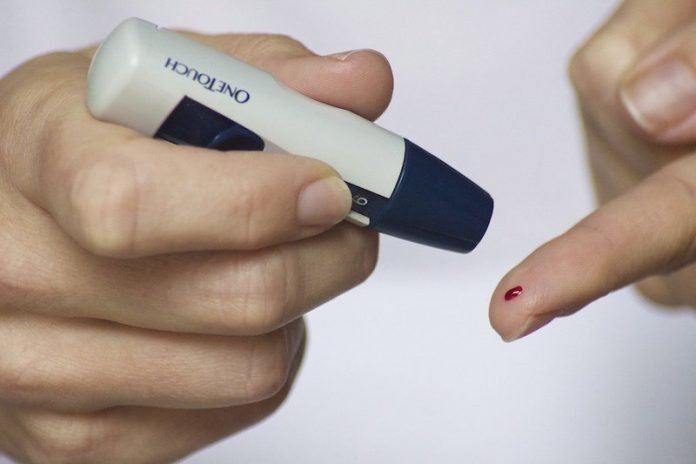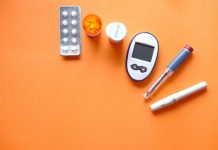
In a new study from the University of Auckland, researchers showed a needle-free technology that would allow people with diabetes to measure blood sugar levels without having to stick a needle into their fingertips is closer to reality.
The researchers turned their attention to needle-free jet injection, an emerging but well-developed technique in which a drug is delivered directly with a high-speed narrow jet of fluid.
They demonstrated for the first time that a jet injector could also be used to collect blood samples from humans—that is, release enough blood for glucose sampling, sans needles.
People with diabetes typically need to measure their blood glucose concentration several times each day.
They do so by pricking their fingers with a needle to release a drop of blood. A glluclose meter then indicated how much insulin is required for the person to maintain their blood sugar.
Fingertips are the preferred site for blood sampling because they have a high density of blood vessels.
But the fingertips are also sensitive, and pain, skin damage, bruising and risk of infection from regular ‘pricking’ has spurred increasing efforts to develop needle-free methods of blood testing for people with diabetes.
Jet injection has been the subject of years of research by the team, which includes developing jet injectors for delivering drugs such as insulin, nicotine, and as local anesthetic for dental treatment.
In the study, the team demonstrated that the technology could also be used to pierce the skin with a small volume of harmless saline solution, and this would release enough blood for glucose concentration measurement—that is, for extraction rather than injection.
The study involved 20 healthy participants, who each volunteered four fingertips, each of whom received a lancet prick (the standard needle) and jet injection through three differently shaped and sized nozzles.
The team showed that indeed it did, with some nozzle shapes performing better than others—a ‘slot’ shaped nozzle released more blood than a circle-shaped nozzle, for instance.
Most of the different jet injection nozzles were generally perceived as no more painful than a standard lancet, and in some cases, less so.
The team is now investigating if they can use jet injection not only to release blood, but to suck back, to extract fluid. This would allow for the design of an even smaller nozzle.
They have the technology, having developed the world’s first jet injection device that uses electric motors to pressurize the drug—this allows for more precise control than the more common spring-actuated jet injector.
If you care about diabetes, please read studies about poorly managed diabetes increases risk of more severe COVID and findings of a new way to detect diabetes-related blindness early.
For more information about diabetes and your health, please see recent studies about common heartburn drugs may increase risk of type 2 diabetes and results showing that this surgery can ‘cure’ type 2 diabetes.
The study is published in the Journal of Diabetes Science and Technology. One author of the study is Jiali Xu.
Copyright © 2021 Knowridge Science Report. All rights reserved.



